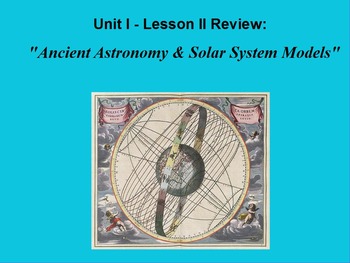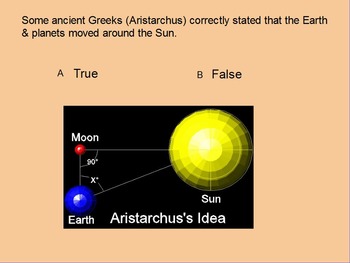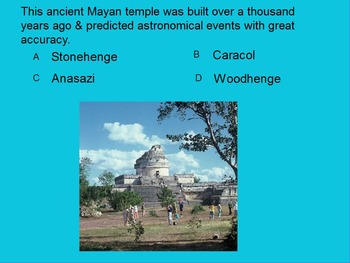ActivInspire Review Unit I Lesson II "Ancient Astronomy & Solar System Models"
- Flipchart File
- Easel Activity
Description
Based on the PowerPoint Unit I Lesson II "Ancient Astronomy and Solar System Models." Questions include 20 true/false; multiple choice and text entries/responses. A PDF student worksheet/study guide using TPT's Easel program is included. This allows for students to complete the assignment online and to submit through Google classroom (see the easy-to-use Easel instructions). All Unit I PowerPoint lessons; ActivInspire reviews; assessments and many related activities; worksheets etc. can be found under "Complete Astronomy Unit I Introduction Into Astronomy" zip file folder.
Terms/concepts in this lesson include:
Stonehenge
Caracol
Supernova 1054 A.D.
Crab Nebula
Betelgeuse
celestial sphere
geocentric model
Ptolemaic model
heliocentric model
heliocentricity
altitude
azimuth
zenith
deferent
epicycle
eccentricity
retrograde motion
Mars
ellipse
focus
Ptolemy
Copernicus
astronomydad
Review Unit I Lesson II "Ancient Astronomy & Solar System Models" by astronomydad is licensed under a Creative Commons Attribution 3.0 Unported License.






